Bomber Command Memorial
In 1940, the British Prime Minister Winston Churchill said "the fighters are our salvation but the bombers alone provide the means of victory", yet in his speech on VE Day in 1945 to acknowledge the contribution made to winning the war by the various branches of the armed services, Bomber Command got no mention. It is generally supposed that the volte face occurred due to embarrassment at some aspects of what happened in between, in particular the campaign of area bombing which killed a lot of civilians. An impassioned and highly-polarised debate on whether or not this loss of life was justified by the circumstances of the time has taken place ever since. This is not the place to join that debate, as this website is concerned with remembering rather than justifying. For whatever reason, it took 67 years for a major public memorial to commemorate the tragic loss of 55,573 young Bomber Command airmen in the Second World War to be created, at the north west corner of Green Park in London. It was unveiled on 28 June 2012, in a ceremony which brought together thousands of Bomber Command veterans and family members from all over the world, to remember the bravery and sacrifice of their lost relatives and comrades.
The memorial is a large-scale open building of classical style:
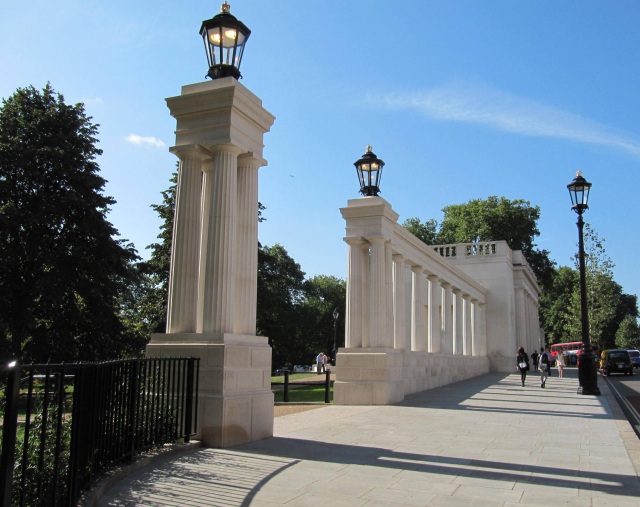
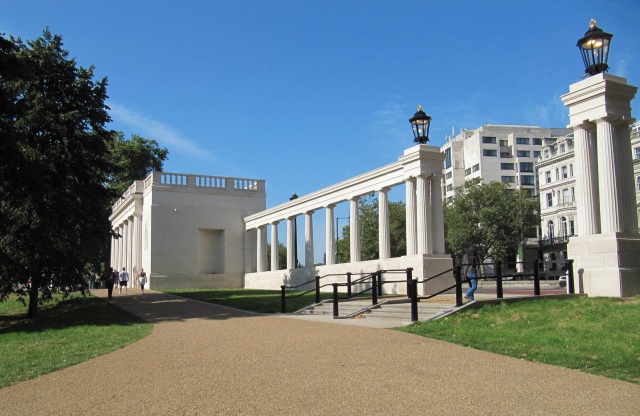
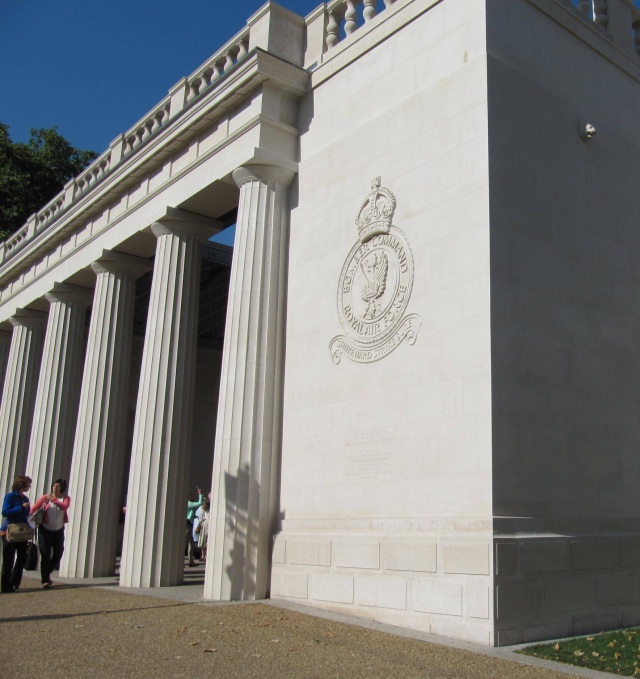
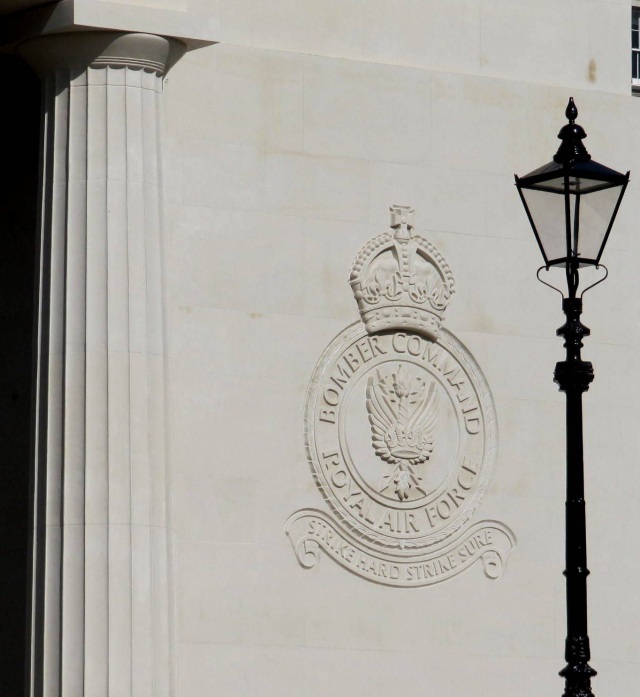
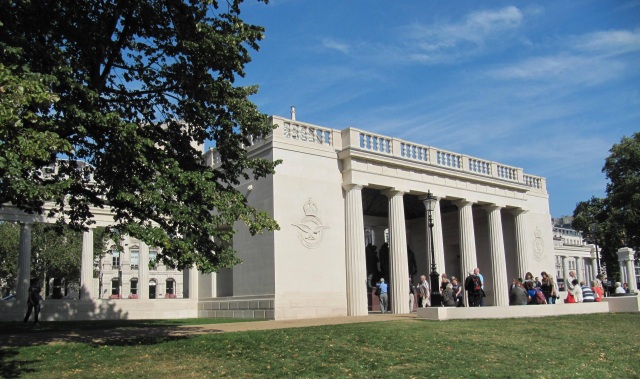
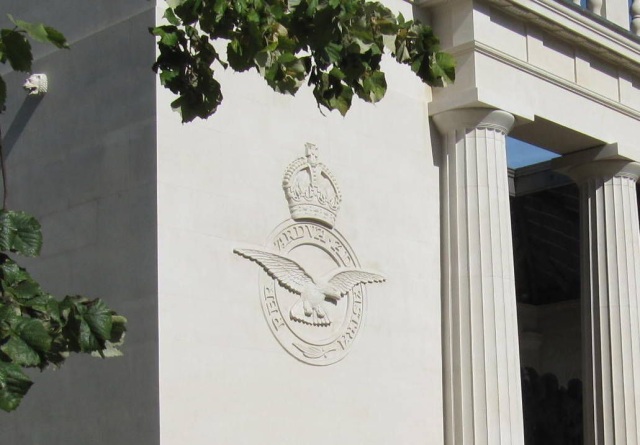
There are inscriptions inside which show Churchill's words of 1940:
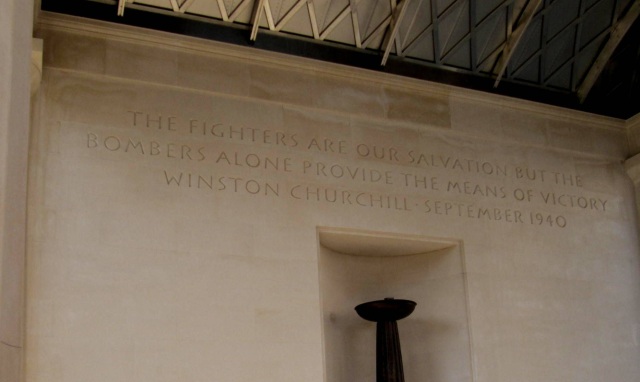
and which acknowledge the airmen killed:
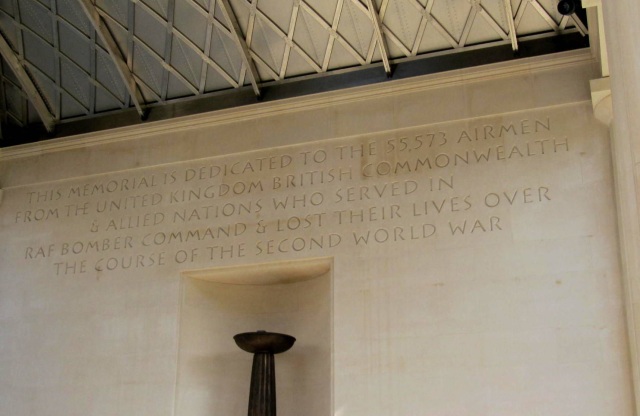
The centrepiece is a nine foot high bronze sculpture depicting seven Bomber Command aircrew in flying gear:
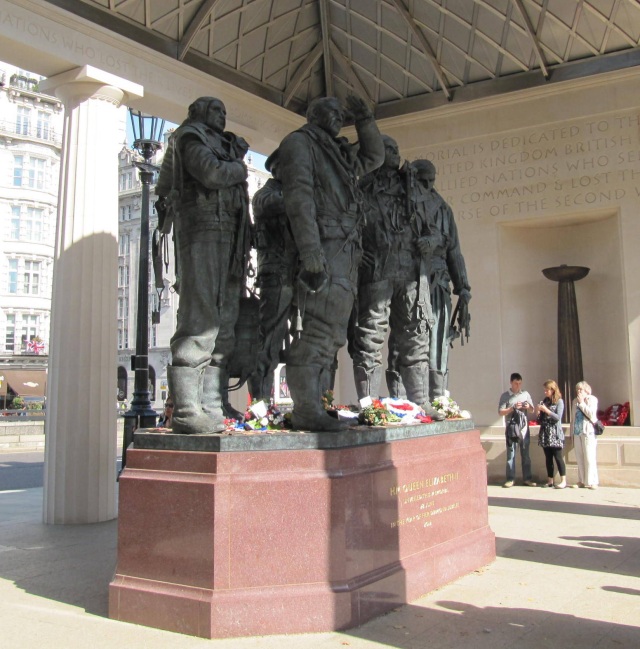
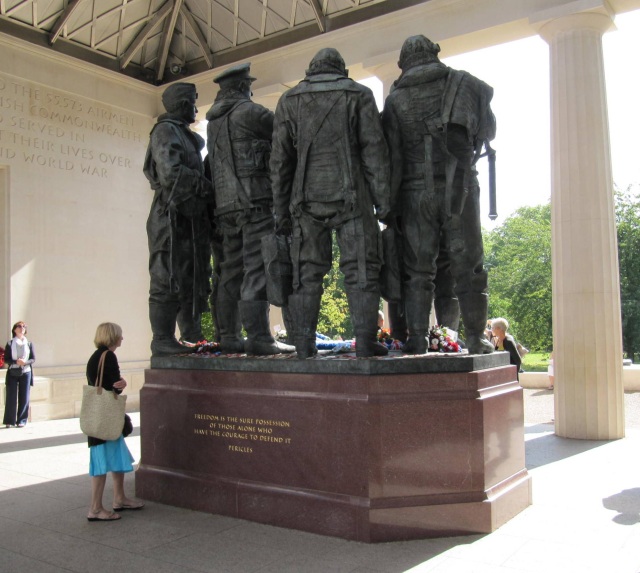
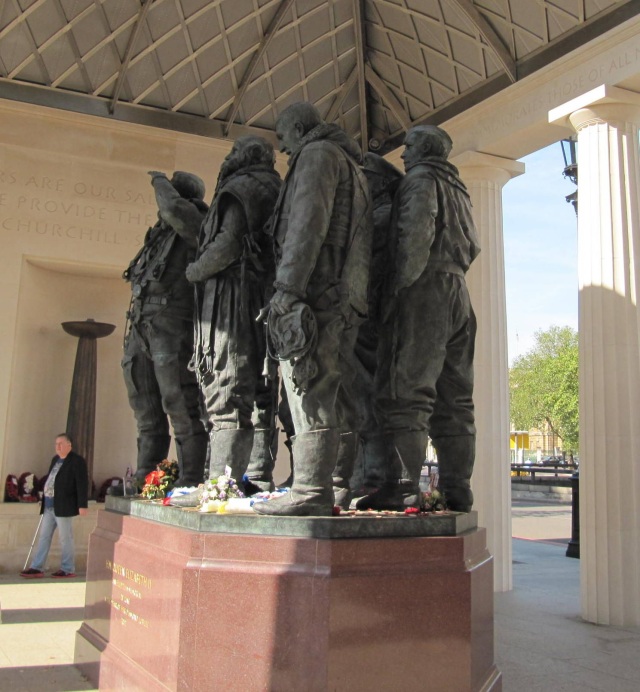
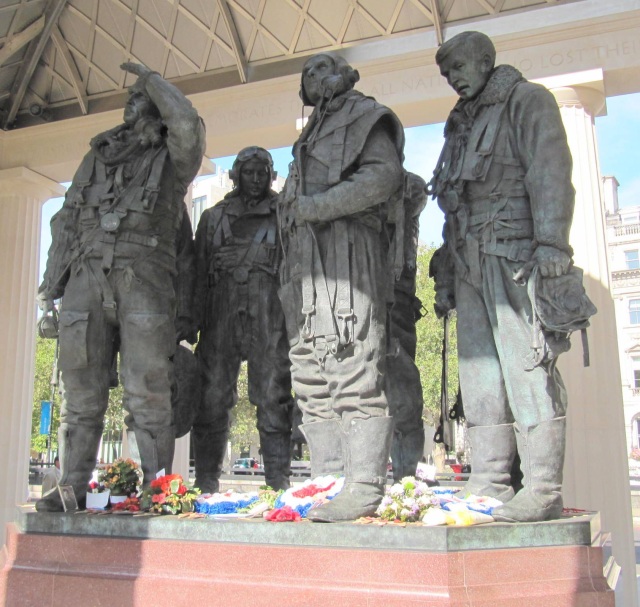
The sculpture's plinth is used for temporary personal tributes:
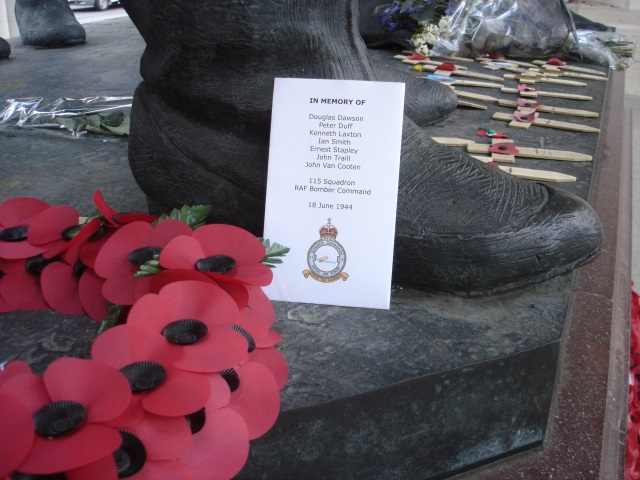
There is a further inscription to the memory of others killed, with the words "THIS MEMORIAL ALSO COMMEMORATES THOSE OF ALL NATIONS WHO LOST THEIR LIVES IN THE BOMBING OF 1939-1945".
The RAF Benevolent Fund took over guardianship of the memorial after the unveiling. This will ensure that it continues to be a lasting tribute to the men who gave their lives serving in Bomber Command and a symbol of peace and reconciliation for future generations.
Individual Recognition
As well as the campaign for a Bomber Command Memorial, there has long been one for individual aircrew members of Bomber Command to receive a dedicated medal to acknowledge their specific contribution to the conduct of the war. Until recently, any such award has been refused and those involved have had to make do with the 1939–1945 Star, a general campaign medal of the British Commonwealth, awarded for operational service in World War II between 3 September 1939 and 2 September 1945. There were various eligibility criteria based on the length and nature of service, but the star was immediately awarded if the service period was terminated by death, disability or wounding.
However, in early 2013 it was announced that a Bomber Command Clasp, to be attached to the ribbon of the star, would be granted to aircrew on an operational unit who served for at least sixty days or completed a tour of operations, and flew at least one operational sortie from 3 September 1939 to 8 May 1945, inclusive. Eligibility was extended to those members of Bomber Command aircrew who did not meet the qualifying criteria due to service being brought to an end by death, wounds or other disability due to service, or whose service was marked by a gallantry award or who were taken as a prisoner of war.
Foreign nationals commissioned or enlisted into the British, or the then Dominion, Air Forces were eligible provided the individuals did not receive a similar award from their own Government.
The reaction to the news of the clasp has, not surprisingly, been mixed, and there is still a vociferous campaign for the award of a freestanding medal akin to the Arctic Star which was announced at the same time as the Bomber Command Clasp.